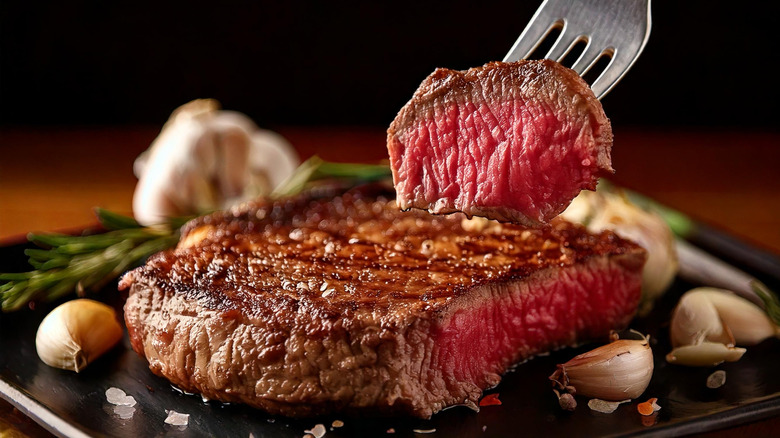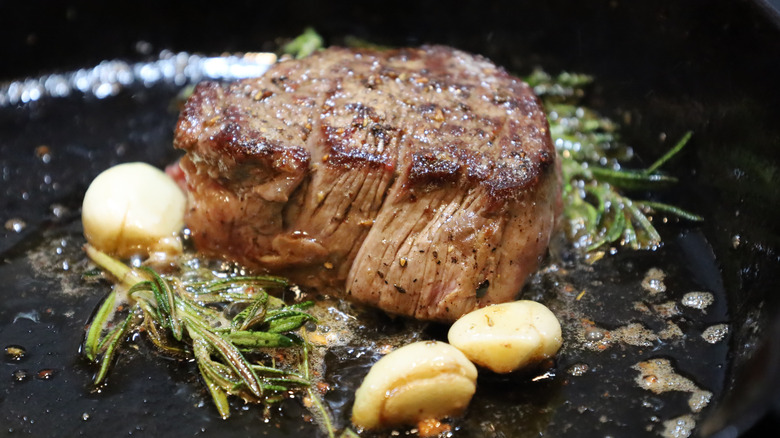The Huge Cookware Mistake That's Ruining Your Steak Crust
It's hard to top the rich lusciousness and mouthwatering flavor of a steak that's been seared to perfection with a crispy browned crust and a tender, juicy interior. But sometimes you can pick out the best steak at the store only to have your anticipation turn to disappointment when it comes out of the pan with a mediocre crust. You may be inadvertently causing this if you're using a non-stick pan, one of the mistakes you should avoid when cooking steak.
Seared steak gets the golden brown exterior that gives it delicious charred flavor and textural contrast from what's called the Maillard reaction. High heat causes this reaction in steak and other foods, changing its proteins and sugars to create that browned color, taste, texture, and tempting sizzling meat smell. Steak has to be cooked in a very hot pan that's been preheated to around 400 to 450 degrees Fahrenheit for this culinary magic to take place.
A non-stick pan's surface has little grip to it, which makes it harder to get the kind of direct contact between the hot pan and meat necessary for the Maillard reaction, so the steak can end up with a sparse or thin crust. These pans aren't meant to be used at high temperatures, because it can ruin their non-stick coating, and also don't retain heat as well as those made with other metals like stainless steel. Both of these are a problem, since the pan must get blazing hot and stay that way to properly sear steak.
Best pans and other tips for perfect steak crust
Cast iron pans like Ina Garten's favorite from the iconic Lodge brand are among the best for making steak with a crust you can't wait to bite into. The cast iron retains heat well, so it stays hot when the cooler steak goes in, and remains at high temperature while it cooks. Pans made of stainless steel or aluminum are good choices if they have heavy bottoms, since the thick undersides will hold on to heat.
The size of the pan can also affect the sear. Your steak can turn out steamed if there's not enough space around it, particularly if you're cooking more than one and they're too close together. Use a 12-inch pan for a large steak, or if you're searing two or more pieces of meat. A 10-inch pan is okay for one or two smaller steaks.
A few other tips can help ideal crust production. Pat the meat dry to remove any moisture, since browning can't begin in the pan until any surface liquid evaporates. Season with salt right before cooking or at least 40 minutes to an hour earlier. Salt begins to pull out water within a couple of minutes, so liquid will be on the steak if you season even five minutes ahead of time. But by about an hour later, most of it is reabsorbed. Help maintain the important contact between the steak and hot pan by occasionally using your fork or tongs to push on the top of the meat.


